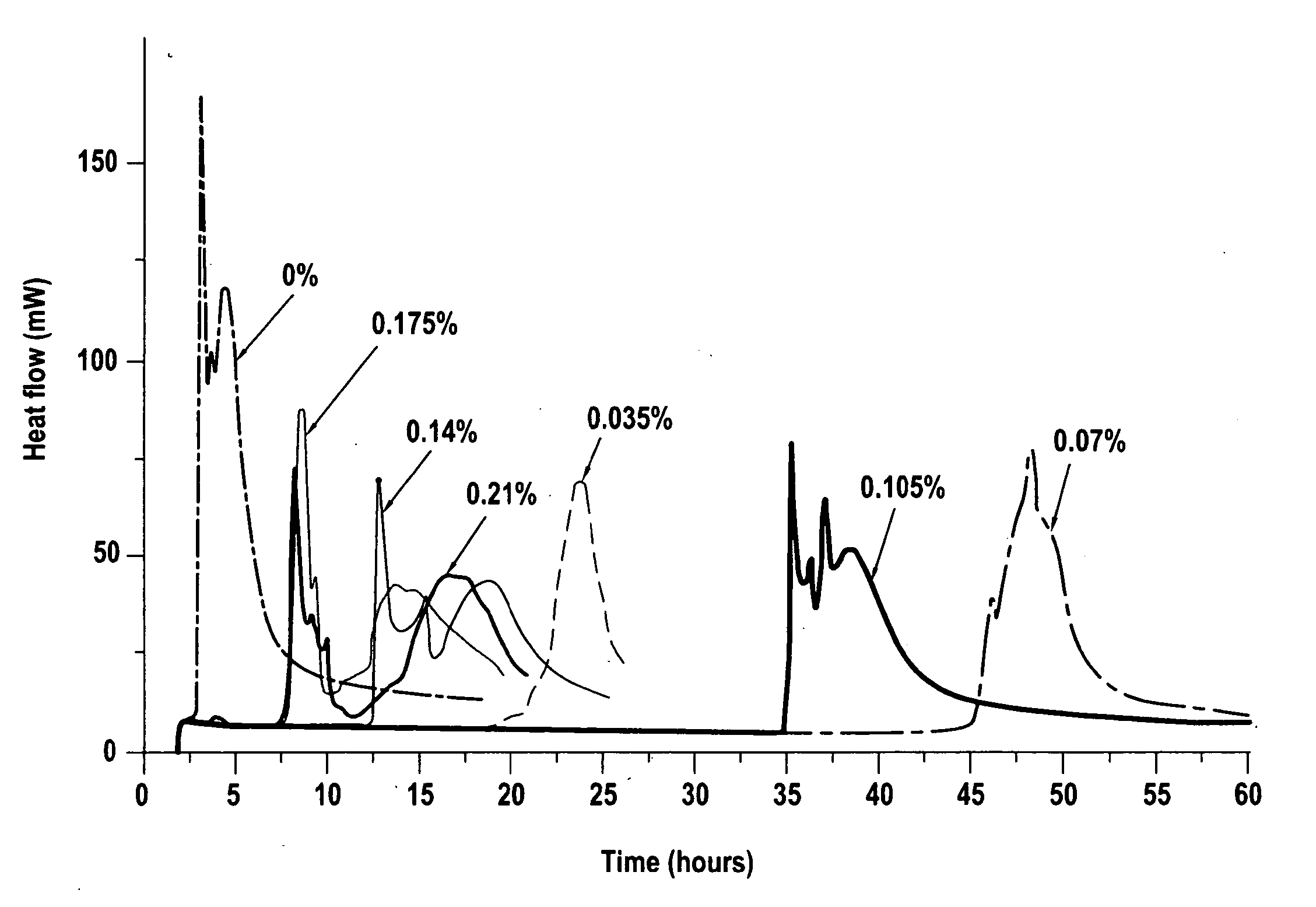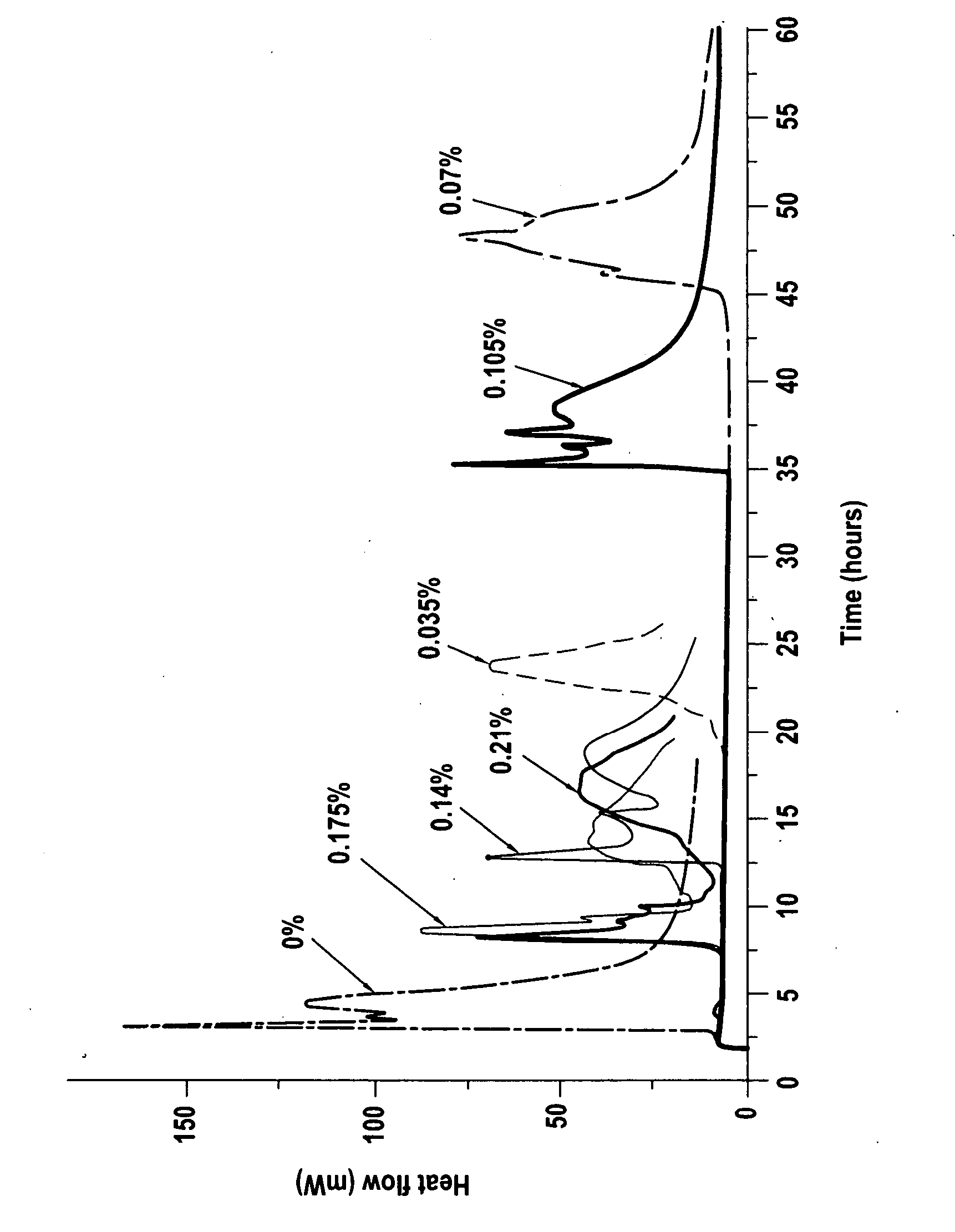Cement Retarder Systems, and Retarded Cement Compositions
a technology of cement retarder and composition, which is applied in the direction of sealing/packing, chemistry apparatus and processes, and wellbore/well accessories. it can solve the problems of difficult use of cement retarder systems and problems in effective placement of cement slurry
- Summary
- Abstract
- Description
- Claims
- Application Information
AI Technical Summary
Problems solved by technology
Method used
Image
Examples
Embodiment Construction
[0025]FIG. 1 shows a plot of heat flow vs. time for a series of cement compositions measured in an isothermal calorimeter to determine the length of the induction period (time period during which the cement slurry does not set), the end of the induction period being indicated by the sudden increase in heat flow. The concentration of borate was maintained constant at 4% BWOC (by weight of cement) in all tests plotted in FIG. 1, and the concentration of EDTMP was varied between 0% and 0.21%, as indicated. FIG. 1 shows that the length of induction period varies with the borate:EDTMP ratio.
[0026] At 0% EDTMP the cement begins to set as soon as the test temperature is reached, (i.e., 182° C. [360° F.]), after about 2 and a half hours. The addition of very small concentrations of EDTMP (0.035 and 0.07% BWOC) significantly lengthens the induction period to 20 and 45 hours, respectively. Further additions of EDTMP lengthen the induction period by a lesser amount, 7 and a half hours with 0....
PUM
| Property | Measurement | Unit |
|---|---|---|
| Temperature | aaaaa | aaaaa |
| Temperature | aaaaa | aaaaa |
| Fraction | aaaaa | aaaaa |
Abstract
Description
Claims
Application Information
 Login to View More
Login to View More - R&D
- Intellectual Property
- Life Sciences
- Materials
- Tech Scout
- Unparalleled Data Quality
- Higher Quality Content
- 60% Fewer Hallucinations
Browse by: Latest US Patents, China's latest patents, Technical Efficacy Thesaurus, Application Domain, Technology Topic, Popular Technical Reports.
© 2025 PatSnap. All rights reserved.Legal|Privacy policy|Modern Slavery Act Transparency Statement|Sitemap|About US| Contact US: help@patsnap.com


